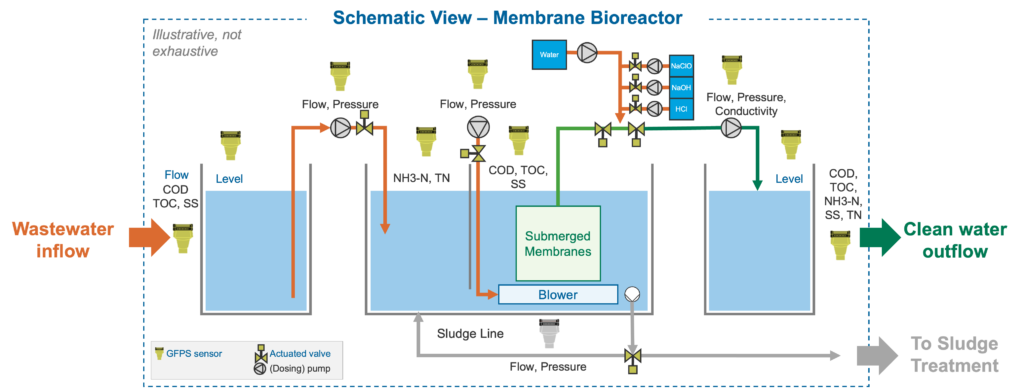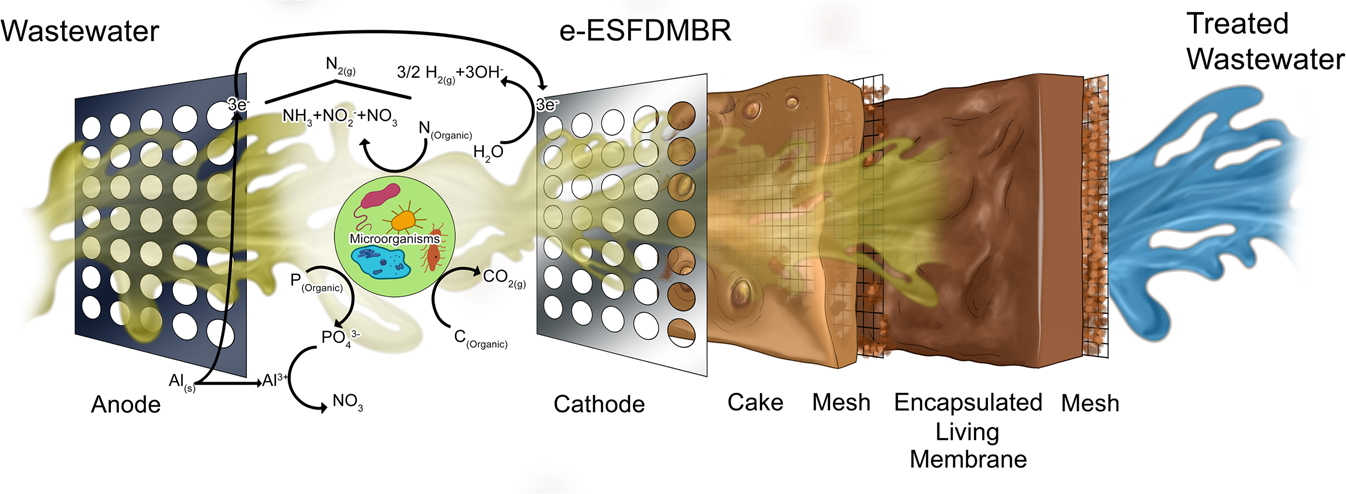How Membrane Bioreactor Can Help Meet Stringent Environmental Regulations
How Membrane Bioreactor Can Help Meet Stringent Environmental Regulations
Blog Article
The Advantages of Membrane Bioreactors in Sustainable Wastewater Administration
Membrane bioreactors (MBRs) stand for an essential innovation in lasting wastewater administration, efficiently combining organic therapy with innovative membrane filtering modern technology. As the demand for lasting options escalates, exploring the complex benefits of MBRs might disclose unanticipated effects for the future of wastewater treatment systems.
Overview of Membrane Layer Bioreactors
Membrane bioreactors (MBRs) represent a significant innovation in wastewater therapy technology, incorporating organic deterioration with membrane filtering to enhance the performance of the therapy procedure. This ingenious system incorporates the benefits of traditional triggered sludge procedures with membrane modern technology, permitting improved solid-liquid splitting up. MBRs use semi-permeable membrane layers to separate treated water from biomass, causing top quality effluent that can be recycled or safely discharged right into the atmosphere.
The functional design of MBRs normally includes a bioreactor where microorganisms damage down natural matter, complied with by a membrane device that filters the blended alcohol. This configuration not only minimizes the impact of the therapy facility but also permits higher biomass concentrations and lowered hydraulic retention times. Furthermore, MBRs are qualified of treating a broader series of contaminants, including nutrients and virus, making them suitable for various applications, from metropolitan wastewater therapy to industrial effluent handling.
The combination of MBRs right into wastewater administration systems is indicative of an expanding trend in the direction of lasting and reliable methods in ecological design. Their capacity to generate high-quality effluent while minimizing area demands settings MBR innovation as a crucial player in modern wastewater treatment solutions.
Enhanced Effluent Top Quality

The membrane filtering process serves as a physical obstacle, making it possible for the retention of bacteria and particle issue, which adds to a clearer and cleaner effluent (Membrane Bioreactor). MBRs run at higher biomass focus than traditional activated sludge systems, promoting more reliable biodegradation of contaminants. This leads to a decrease in biochemical oxygen demand (BOD) and complete suspended solids (TSS) degrees in the final effluent
Additionally, MBRs demonstrate superb efficiency in dealing with difficult wastewater compositions, such as commercial effluents and wastewater with high nutrient tons. Therefore, the effluent created is frequently of greater high quality, enabling for even more flexible disposal alternatives and decreased ecological impact. Ultimately, the improved effluent top quality accomplished with MBR innovation emphasizes its vital duty ahead of time lasting wastewater administration techniques.
Water Reuse Opportunities
The premium effluent created by membrane bioreactors (MBRs) opens up considerable opportunities for water reuse in various applications. MBRs effectively get rid of contaminants, including microorganisms, put on hold solids, and raw material, resulting in treated water that satisfies or goes beyond regulatory criteria for reuse. This quality permits the execution of water reusing initiatives across varied sectors.
One popular application is in farming, where dealt with wastewater can be utilized for irrigation, promoting sustainable farming methods while preserving freshwater resources. Furthermore, MBR-treated effluent can be made use of for commercial procedures such as air conditioning, cleaning, and as a process water source, considerably minimizing the need for safe and clean water in these operations.
In urban atmospheres, MBRs help with the use of recovered water for landscape watering, toilet flushing, and various other non-potable usages, adding to the total resilience of supply of water systems. The assimilation of MBR modern technology in decentralized systems help in managing local water needs, especially in water-scarce regions.
Decreased Ecological Impact
How can the adoption of membrane layer bioreactors (MBRs) add to a reduced environmental impact in wastewater management? MBRs dramatically boost the therapy effectiveness of wastewater while lessening ecological disturbances. By incorporating organic treatment procedures with membrane layer filtering, MBRs properly get rid of a wide variety of pollutants, consisting of natural matter, nutrients, and virus. This sophisticated purification causes higher-quality effluent, which is vital for safeguarding marine communities and minimizing the worry on natural water bodies.
Moreover, MBRs run at reduced hydraulic retention times compared to standard systems, resulting in smaller sized therapy plant footprints. This compact style reduces land use, therefore preserving all-natural habitats and biodiversity. The procedure also produces much less sludge than traditional approaches, reducing disposal obstacles and decreasing greenhouse gas discharges linked with sludge management.
In addition, MBRs help with the healing of beneficial resources, such as water and nutrients, contributing to a round economy. By enabling water reuse for watering or industrial procedures, MBRs aid alleviate freshwater scarcity, therefore advertising lasting water use methods. Inevitably, the fostering of MBR technology represents a significant stride in the direction of minimizing the environmental effect of wastewater administration systems.
Financial Benefits of MBRs

Additionally, MBRs help with the production of premium effluent, which can be recycled for numerous applications, such as farming watering and commercial procedures - Membrane Bioreactor. This reuse ability can significantly lower water procurement costs, supplying a financial reward for markets dealing with strict water policies
The small layout of MBR systems additionally leads to minimized land demands, which is particularly valuable in metropolitan areas where real estate is costly. By decreasing room, markets and more towns can minimize land acquisition and upkeep costs.
Additionally, MBRs often call for much less frequent upkeep and have a longer life-span than traditional systems, better contributing to cost financial savings. In summary, the economic benefits of MBRs-- ranging from reduced functional costs to land financial savings and effluent reuse-- make them an engaging option for sustainable wastewater monitoring, providing both immediate and long-lasting monetary benefits.
Final Thought
Membrane layer bioreactors stand for a transformative method to lasting wastewater management, integrating organic treatment with innovative membrane purification for superior effluent high quality. Their ability for effective contaminant elimination helps with water reuse, consequently preserving important freshwater resources. In addition, MBRs add to minimized ecological influences through small styles and reduced sludge generation. Economic advantages even more improve their stability, making MBRs a promising service for attending to the obstacles of wastewater treatment and promoting sustainable resource administration.
Membrane layer bioreactors (MBRs) stand for try these out an essential innovation in lasting wastewater monitoring, successfully merging biological treatment with innovative membrane filtering modern technology.Membrane layer bioreactors (MBRs) stand for a substantial advancement in wastewater treatment technology, integrating organic destruction with membrane layer filtering to enhance the performance of the therapy process.Achieving enhanced effluent top quality is one of the most considerable advantages of using membrane layer bioreactors (MBRs) in wastewater treatment.Additionally, MBRs show exceptional performance in dealing with difficult wastewater structures, such as industrial effluents and wastewater with high nutrient loads.Incorporating membrane bioreactors (MBRs) into wastewater click for more management not just minimizes environmental influence however likewise presents substantial economic benefits.
Report this page